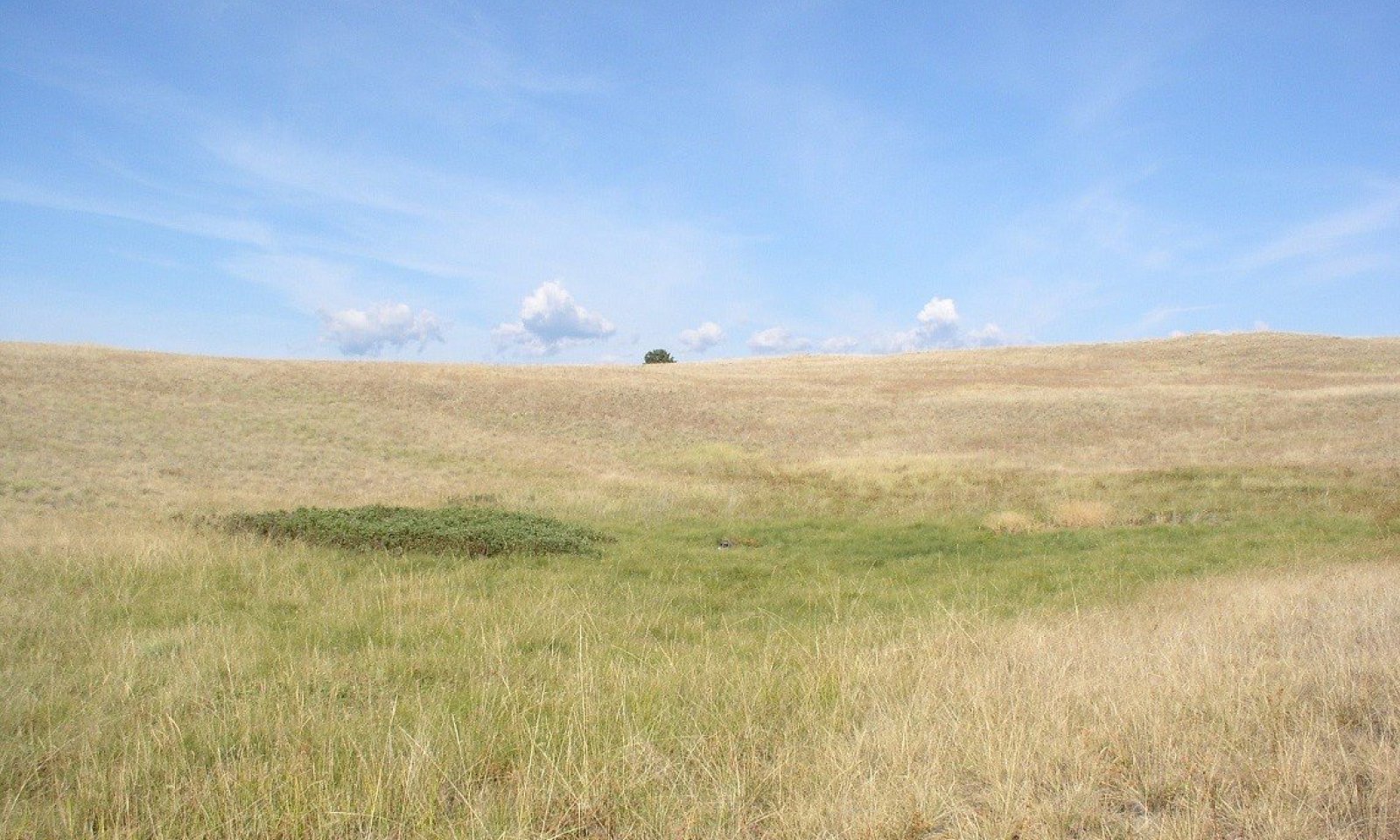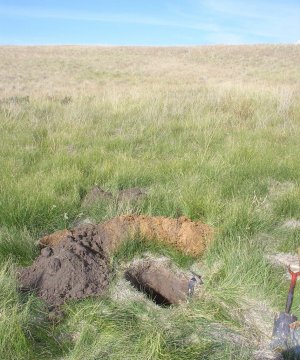
Pothole Seeley, Swan, Flathead and Tobacco Valleys
Scenario model
Current ecosystem state
Select a state
Management practices/drivers
Select a transition or restoration pathway
-
Transition T1A
Overgrazing, Soil Erosion
More details -
Transition T1B
Introduction of Weedy Propagules, Overgrazing
More details -
Restoration pathway R2A
Range Seeding, Proper Grazing Management
More details -
Transition T2A
Introduction of Weedy Propagules, Fire
More details -
Restoration pathway R3A
Weed Management, Proper Grazing Management, Range Seeding
More details -
Restoration pathway R3B
Weed Management
More details -
No transition or restoration pathway between the selected states has been described
Target ecosystem state
Select a state
Description
This state is characterized by cool-season bunchgrasses and is represented by two communities that differ mainly in the percent composition rough fescue and Idaho fescue (Festuca idahoensis) and bluebunch wheatgrass. Shrubs and forbs are a minor component in this state.
Submodel
Description
This state is characterized by having less than 10 percent rough fescue and less than 50 percent canopy cover. State 2 is represented by two communities that differ in the percent composition of Idaho fescue, production, and soil degradation. Production in this state is considerably lower than in the Taller Bunchgrass State (1). Some native plants tend to increase under prolonged drought and/or heavy grazing practices. A few of these species include Idaho fescue, needleandthread, Sandberg bluegrass, silky lupine, field chickweed, ballhead sandwort, common snowberry, Wood’s rose and fringed sagewort.
Submodel
Description
The Invaded State (3) is characterized by less than 25 percent of invasive species: spotted knapweed, leafy spurge, sulphur cinquefoil, and/or cheatgrass are the dominant invasive species in MLRA 44A. Introduced exotic plant species have been identified as one of the greatest threats to the integrity and productivity of native rangeland ecosystems and conservation of indigenous biodiversity (DiTomaso 2000; Mack et al. 2000). In addition to environmental consequences, damages caused and costs incurred to control invasive plants are several billion dollars each year in the United States (Pimentel et al. 2000).
Resilience management
The potential for altered ecosystem structure and function is high in the Invaded State (3) and can occur in many ways. The increase in invasive species, especially noxious weeds, can lead to a reduction of the native bunchgrasses and an increase in the proportion of bare ground, which often results in reduced infiltration rates and increased surface runoff and erosion. Invasion by cheatgrass reduces above and below ground biomass (Ogle et al. 2003), increases plant litter, changes plant community canopy architecture (Belnap and Phillips 2001), reduces soil biota richness and abundance, reduces plant community richness (Belnap et al. 2005), increases wildfire frequency (Whisenant 1990), and potentially facilitates invasion by other noxious or invasive plants. Dense populations of invasive species can cause soil loss to increase because of lack of surface cover (Lacey et al. 1989).
Early in the invasion process there is a lag phase where invasive plant populations remain small and localized before expanding exponentially (Hobbs and Humphries 1995). Based on research conducted in noxious weed-invaded plant communities in Montana, it is reasonable to estimate that 25 percent dry weight composition of invasive plant species is the point in the invasion process where spread and abundance increase exponentially and where a plant community has crossed a threshold (Masters and Sheley 2001). For aggressive invasive species (i.e., spotted knapweed), this threshold could be less than 10 percent
Once invasive species dominate the site, either in species composition by weight or in their impact on the community, the threshold has been crossed to the Invaded State (3). Once invasive species such as spotted knapweed, cheatgrass, and leafy spurge become established, they are very difficult to eradicate. Therefore, considerable effort should be placed in preventing plant communities from crossing a threshold to the Invaded State (3) through early detection and proper management. Preventing new invasions is by far the most cost-effective control strategy and typically places an emphasis on education. Control measures used on the noxious plant species impacting this ecological site include chemical, biological, and cultural control methods. The best success has been found with an integrated weed management strategy that incorporates one or several of these options along with education and prevention efforts (DiTomaso 2000).
Production in the invaded community may vary greatly. A site dominated by spotted knapweed, where soil fertility and soil chemistry remain near potential, may have production near that of the reference community. A site with degraded soils and infestation of cheatgrass may produce only 10 to 20 percent of the reference community.
Submodel
Mechanism
Transition T1A
The Taller Bunchgrass State (1) transitions to the Altered Bunchgrass State (2) if plant canopy cover declines to less than 50 percent and rough fescue decreases to below 10 percent by dry weight. The trigger for this transition is the loss of taller bunchgrasses, which creates open spots of bare soil. Soil erosion is accompanied by decreased soil fertility driving the transitions to the Altered Bunchgrass State. There are several other key factors signaling the approach of transition T1A: increases in soil physical crusting, decreases in cover of cryptogamic crusts, decreases in soil surface aggregate stability and/or evidence of erosion, including water flow patterns, development of plant pedestals, and litter movement. The driver for this transition is improper grazing management and/or long-term drought leading to a decrease in rough fescue composition to less than 10 percent.
Mechanism
Transition T1B
Regardless of grazing management, without some form of weed management (chemical, mechanical, or biological control), the Taller Bunchgrass State (1) can transition to the Invaded State (3) if aggressive invasive species, such as spotted knapweed and cheatgrass are introduced, even if the herbaceous component of the Reference Plant Community (1.1) is thriving. Long-term stress conditions for native species (e.g., overgrazing, drought, and fire) accelerate the process. If populations of invasive species reach critical levels, the site transitions to the Invaded State. The driver for this transition is the presence of aggressive invasive species.
Mechanism
Restoration Pathway R2A
The Altered Bunchgrass State (2) has lost soil or vegetation attributes to the point that recovery to the Taller Bunchgrass State (1) will require reclamation efforts, such as soil rebuilding, intensive mechanical treatments, and/or revegetation. The drivers for this restoration pathway are reclamation efforts and proper grazing management. The trigger is restoration efforts.
Mechanism
Transition T2A
Invasive species can occupy the Altered Bunchgrass State (2) and drive it to the Invaded State (3). The Altered Bunchgrass State is at risk of this transition occurring if invasive propagules are present. The driver for this transition is the presence of critical population levels (greater than 25 percent) of invasive species. The trigger is the presence of propagules of invasive species.
Mechanism
Restoration Pathway R3A
Restoration of the Invaded State (3) to the Taller Bunchgrass State (1) requires substantial energy input. The drivers for this restoration pathway are removal of invasive species, restoration of native bunchgrass species, ongoing management of invasives, and proper grazing management. Without maintenance, invasive species are likely to return (probably rapidly) because of the presence of propagules in the soil and an increase in soil disturbance. The drivers for this reclamation pathway are treatments to reduce or remove invasive/noxious species in combination with favorable growing conditions.
Mechanism
Restoration Pathway R3B
If invasive species are removed without sufficient remnant populations reference community species (particularly rough fescue), a site in the Invaded State (3) is likely to return to the Altered Bunchgrass State (2) instead of the Taller Bunchgrass State (1). The driver for the reclamation pathway is weed management without reseeding. The trigger is invasive species control.
Model keys
Briefcase
Add ecological sites and Major Land Resource Areas to your briefcase by clicking on the briefcase (![]() ) icon wherever it occurs. Drag and drop items to reorder. Cookies are used to store briefcase items between browsing sessions. Because of this, the number of items that can be added to your briefcase is limited, and briefcase items added on one device and browser cannot be accessed from another device or browser. Users who do not wish to place cookies on their devices should not use the briefcase tool. Briefcase cookies serve no other purpose than described here and are deleted whenever browsing history is cleared.
) icon wherever it occurs. Drag and drop items to reorder. Cookies are used to store briefcase items between browsing sessions. Because of this, the number of items that can be added to your briefcase is limited, and briefcase items added on one device and browser cannot be accessed from another device or browser. Users who do not wish to place cookies on their devices should not use the briefcase tool. Briefcase cookies serve no other purpose than described here and are deleted whenever browsing history is cleared.
Ecological sites
Major Land Resource Areas
The Ecosystem Dynamics Interpretive Tool is an information system framework developed by the USDA-ARS Jornada Experimental Range, USDA Natural Resources Conservation Service, and New Mexico State University.



